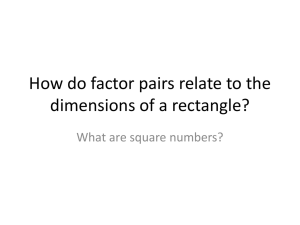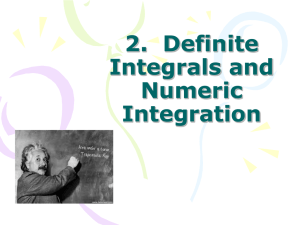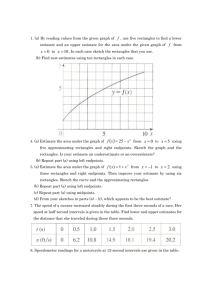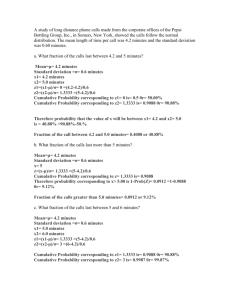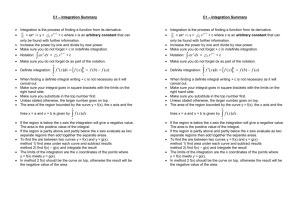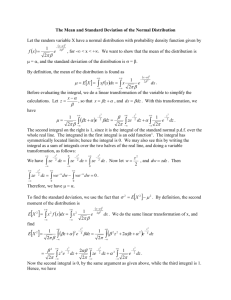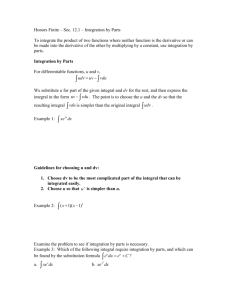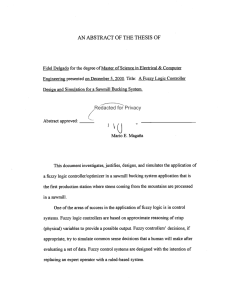Topic 2_2_Ext 05__Key
advertisement
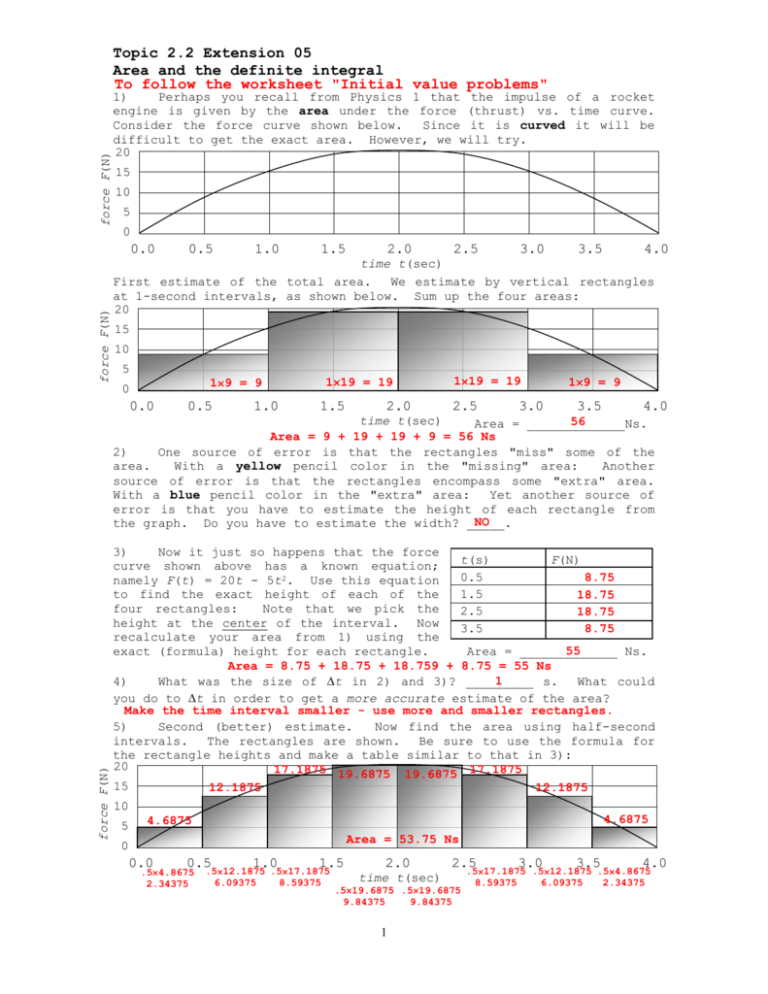
force F(N) Topic 2.2 Extension 05 Area and the definite integral To follow the worksheet "Initial value problems" 1) Perhaps you recall from Physics 1 that the impulse of a rocket engine is given by the area under the force (thrust) vs. time curve. Consider the force curve shown below. Since it is curved it will be difficult to get the exact area. However, we will try. 20 15 10 5 0 force F(N) 0.0 0.5 1.0 1.5 2.0 2.5 3.0 3.5 4.0 time t(sec) First estimate of the total area. We estimate by vertical rectangles at 1-second intervals, as shown below. Sum up the four areas: 20 15 10 5 19 = 9 0 0.0 0.5 1.0 119 = 19 1.5 2.0 119 = 19 2.5 3.0 19 = 9 3.5 4.0 force F(N) time t(sec) 56 Area = _____________Ns. Area = 9 + 19 + 19 + 9 = 56 Ns 2) One source of error is that the rectangles "miss" some of the area. With a yellow pencil color in the "missing" area: Another source of error is that the rectangles encompass some "extra" area. With a blue pencil color in the "extra" area: Yet another source of error is that you have to estimate the height of each rectangle from NO the graph. Do you have to estimate the width? _____. 3) Now it just so happens that the force t(s) F(N) curve shown above has a known equation; 2 0.5 8.75 namely F(t) = 20t - 5t . Use this equation 1.5 to find the exact height of each of the 18.75 four rectangles: Note that we pick the 2.5 18.75 height at the center of the interval. Now 3.5 8.75 recalculate your area from 1) using the 55 exact (formula) height for each rectangle. Area = _____________ Ns. Area = 8.75 + 18.75 + 18.759 + 8.75 = 55 Ns 1 4) What was the size of t in 2) and 3)? _________ s. What could you do to t in order to get a more accurate estimate of the area? Make the time interval smaller - use more and smaller rectangles. 5) Second (better) estimate. Now find the area using half-second intervals. The rectangles are shown. Be sure to use the formula for the rectangle heights and make a table similar to that in 3): 20 17.1875 19.6875 19.6875 17.1875 15 12.1875 12.1875 10 4.6875 5 4.6875 Area = 53.75 Ns 0 0.0 0.5 .54.8675 2.34375 1.0 1.5 .512.1875 .517.1875 6.09375 8.59375 2.0 2.5 time t(sec) .519.6875 .519.6875 9.84375 9.84375 1 3.0 3.5 4.0 .517.1875 .512.1875 .54.8675 8.59375 6.09375 2.34375 6) Now do the following integral: ∫(20t - 5t2) dt = 20t2/2 - 5t3/3 + C 4 s. Now substitute this 7) What is the ending t in the graph? t = __ 53.3333 + C Ns. value of t into your answer for 6). You get _________ 0 s. Now substitute 8) What is the beginning t in the graph? t = __ this value of t into your answer for 6). You get _________ + C Ns. 0 9) Now subtract the Ns answer of 7) from the Ns answer of 8). 53.3333 Ns. do you get? _________ What 10) Compare compare? they this answer with the Ns answer of 5). How do 53.3333 is very similar to 53.75 11) What happened to the arbitrary constant C? 53.3333 + C - (0 + C) the C cancels in the subtraction. 12) We have just done a process called finding the definite integral. We write 4 upper limit of integration 53.3333 Ns. (20t - 5t2) dt = _________ 0 lower limit of integration ∫ 13) We call the “4” the upper limit of integration and we call the “0” the lower limit of integration. Label them. 14) In review, the definite integral gives the area under the curve that is being integrated. To find the definite integral we do the following steps. First, we integrate: 4 4 square bracket (20t - 5t2) dt = 20t2/2 - 5t3/3 notation 0 0 Note the square bracket notation which has the upper and lower limits of integration shown. Label the square bracket notation. Why isn’t the “C” shown? C cancels in the subtraction. ∫ ] [ 15) Second, we substitute the upper and lower limits into the integral, and subtract. Note that we have not bothered to write the arbitrary constant C, this time. Why can we ignore it? [ 4 20t2/2 - 5t3/3 ]0 = 20·42/2 - 5·43/3 – = 53.3333 Ns _________ - = 53.3333 Ns. _________ 20·02/2 - 5·03/3 0 _________ Ns 16) Consider the area shown below, bounded by f(x) = x3 and x = 4. Find its value, by using the appropriate definite integral. Be sure to show each step of the process clearly, using the appropriate notation. f(x) = x3 4 (x3) dx = 0 ∫ x = 4 4 [ ]0 x4/4 2 = 44/4 - 04/4 = 64

